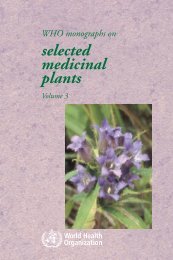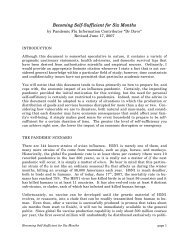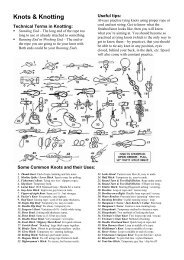Create successful ePaper yourself
Turn your PDF publications into a flip-book with our unique Google optimized e-Paper software.
The Foolproof Four<br />
From the more than fifty common edible mushrooms described<br />
in this book, we have selected four kinds as being the most easily<br />
and surely recognized, most abundant and widespread, and most<br />
desirable in flavor and texture. All four have definite characteristics<br />
that positively distinguish them from doubtful, inedible, or poisonous<br />
kinds, and even from other edible kinds. Once he learns their<br />
few distinguishing marks the beginner can gather and eat these<br />
mushrooms without fear or hesitation and with the assurance that<br />
wherever he may be he is enjoying the best that: mushrooms have<br />
to offer. All are common throughout much of the United States<br />
and Canada; all rank high in edibility and lend themselves to varied<br />
ways of preparation. They are among the elite of the mushroom<br />
world.<br />
All four of these mushrooms are also described and illustrated<br />
in the following section, but a brief, concise synopsis of each should<br />
be especially valuable to the beginner who wishes to be sure of a<br />
few kinds before he has gained the experience arid confidence that<br />
will enable him to know the others equally well. The experienced<br />
mycologist, too, can use this section to initiate his friends into a<br />
fascinating pursuit.<br />
Morels, or Sponge <strong>Mushrooms</strong><br />
The illustrations (Figure i and Plate 4F) show the general shape<br />
of morels far better than words can describe it, and although the<br />
several different kinds of morels differ somewhat in shape and size,<br />
nobody who has seen even a picture of one can confuse morels<br />
with any other plant. The irregular pits and ridges of the cap are<br />
the distinguishing feature. The plant stands from 2 to 6 inches high,<br />
the cap forming the upper half or two thirds and the stem the remainder.<br />
The cap is tan to brown, the stem somewhat paler, and<br />
18
















